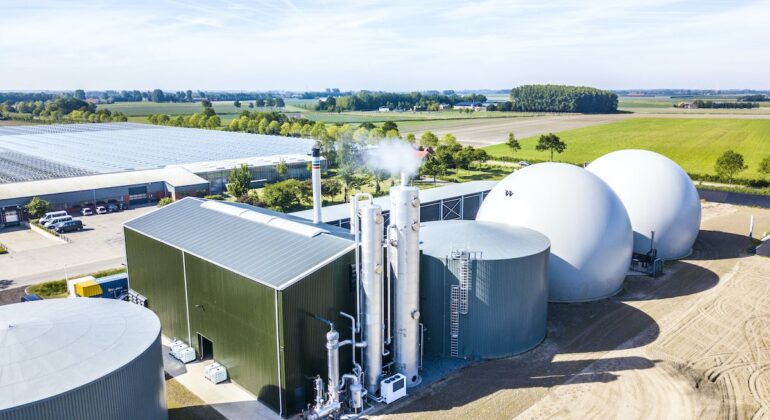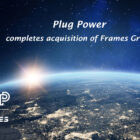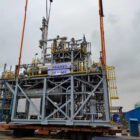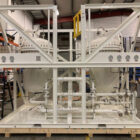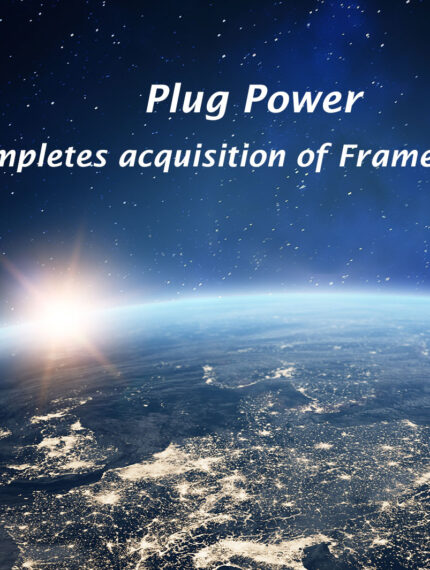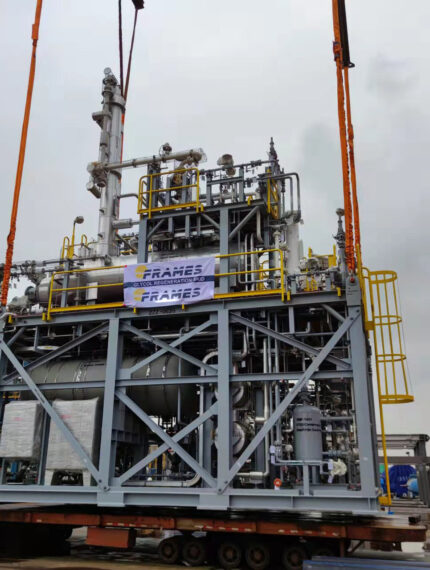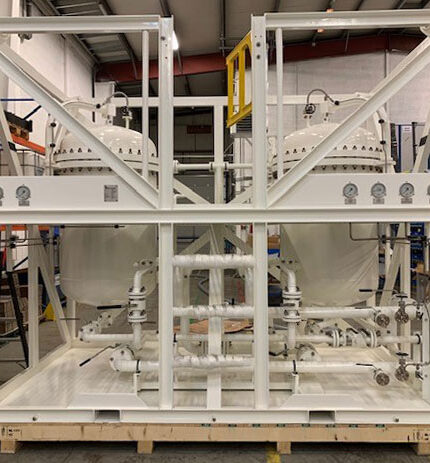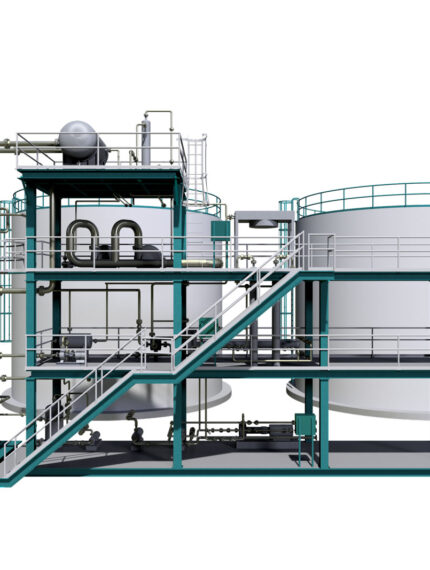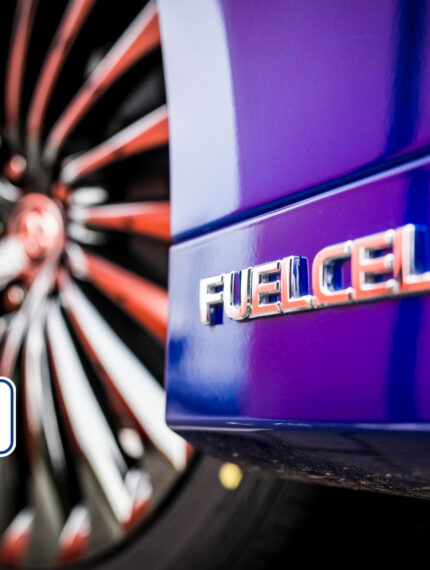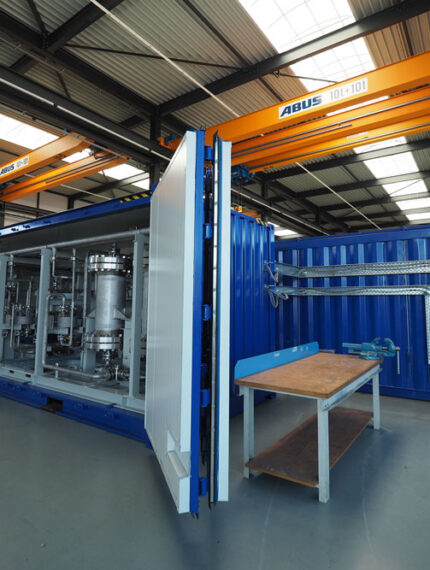Frames is pleased to announce the first carbon neutral system for heating and supplying CO2 for industrial-scale, greenhouse growers. Successfully demonstrated by DES B.V. a cooperative association of growers including VOF Prominent Grevelingen, DT van Noord tomatoes and Van Duijn aubergines, the biomass system will save the growers more than 6.5 million m3 of natural gas, and 12 million kilos of fossil CO2 emissions per year.
The Frames biomass fueled system uses advanced carbon capture and cleaning technology to produce high quality CO2 used to promote plant growth. Carbon dioxide (CO2) enrichment is commonly used in greenhouses to encourage crops to maximize their photosynthesis. Until now, greenhouse growers have relied on using a combination of fossil fuel (natural gas) combustion with air heaters and liquid CO2. However, with the Dutch government committed to reducing CO2 emissions by 2030 to 49% of 1990 levels, the horticultural industry needs to find more environmentally friendly alternatives. Previous attempts to use CO2 from biomass have been inhibited by the high level of pollutants in the flue gases.
The Frames’ carbon neutral CO2 system comprises an installation which captures CO2 from flue gases of chipped natural wood burning in a biomass boiler. After further polishing, the captured CO2 is stored in two large gas tanks for later use. When the wood is burned, the CO2 rich flue gases pass through an absorption tower where they are dissolved in GALLOXOL® – an environmentally friendly solvent specifically designed to selectively pick CO2 from the flue gasses. The other flue gasses exit the absorber into the atmosphere as normal.
The CO2 rich GALLOXOL® then passes through a condenser to release the pure CO2 before being recycled back to the absorption tower. Only the produced pure CO2 is used for fertilizing and not the flue gasses themselves, making the Frames process a significant improvement compared to typical gas fired boiler or combined heat and power (CHP) fertilization systems.
The Frames installation will generate 2.2 T CO2 per hour. It also includes a gas analyzer to check the quality of the CO2 for levels of NOx and ethylene which are by-products of combustion process and a well know concern to growers. The analysis is done as a final quality check and provides an additional reassurance to growers. In the unlikely event the CO2 quality is outside specification, the CO2 will be vented and not used in the greenhouses.
Combination of techniques
The heat and green CO2 from the Frames process is used by the growers in their production processes. “Unique about the project is the capture of the green CO2 from the flue gases. The CO2 is used to promote plant growth in cultivation,” says Pleun van Duijn, one of the founders of DES B.V. In Europe, this combination of techniques has not been used on this scale before, partly due to the complex integration of the different technologies. The cooperation between the three horticultural companies provides economies of scale, making it an environmentally and economically carbon neutral solution.
Sustainability and savings
By using heat from biomass, more than 6.5 million m3 of natural gas is saved per year. In addition, the use of biomass as fuel saves 12 million kilos of fossil CO2 emissions per year. “We want to make our cultivation more sustainable,” says van Duijn. “That’s why we now opt for an innovative and sustainable replacement of a large part of the CO2 and fossil heat used in the plant production process.”
Other companies involved in the DES BV project include: Comgoed from Dirksland as a supplier for the local biomass. The biomass boiler has been supplied by Flanders based, Vyncke and the CO2 capture installation by Frames. Hanse Staalbouw is responsible for the construction of the storage shed and the boiler house.
Other companies involved in the DES BV project include: Comgoed from Dirksland as a supplier for the local biomass. The biomass boiler has been supplied by Flanders based, Vyncke and the CO2 capture installation by Frames. Hanse Staalbouw is responsible for the construction of the storage shed and the boiler house.
Carbon Capture with GALLOXOL® technology
Frames’ experience of CO2 goes back a number of years, being located on the premises of the University of Twente campus in Enschede. We first designed CO2 capture units for the oil and gas industry by applying GALLOXOL® technology originally developed in the Netherlands, to the needs of an industrial-scale process. Five years ago, Frames began adapting its GALLOXOL® technology for CO2 removal in the biogas market.
“Our breakthrough for greenhouse CO2 recovery came when we realized that both heat production and CO2 emissions are features of the same system, so why not tackle both at the same time,” says Nick ten Asbroek, Product Specialist, Frames. “We contacted Vyncke biomass boiler maker and worked with them to develop the complete system.”
“To our knowledge this is the first demo designed to produce greenhouse quality CO2 that includes all the required process steps: automation, heat integration and CO2 storage. It is also of significant size compared to earlier pilots that focused only on the capture of CO2 and did not demonstrate a commercially viable pilot solution.”
Dutch Government Expands SDE+ Carbon Reduction Initiative
Since 2020, the Dutch government is has been providing subsidies on technologies that reduce CO2 emissions. To enable this, the current Sustainable Energy Production Incentive Scheme (SDE +) is being upgraded. The scheme will be called the Sustainable Energy Transition Stimulation Scheme (SDE ++) from 2020 and focuses on more than just sustainable energy.
The SDE ++ is intended to contribute in a cost-effective way to reducing CO2 emissions. By 2030 emissions must be reduced by 49 percent compared to 1990. All coal-fired plants must also be closed. Techniques that reduce CO2 and are cost-effective are the first to be eligible for a subsidy, according to the government.

